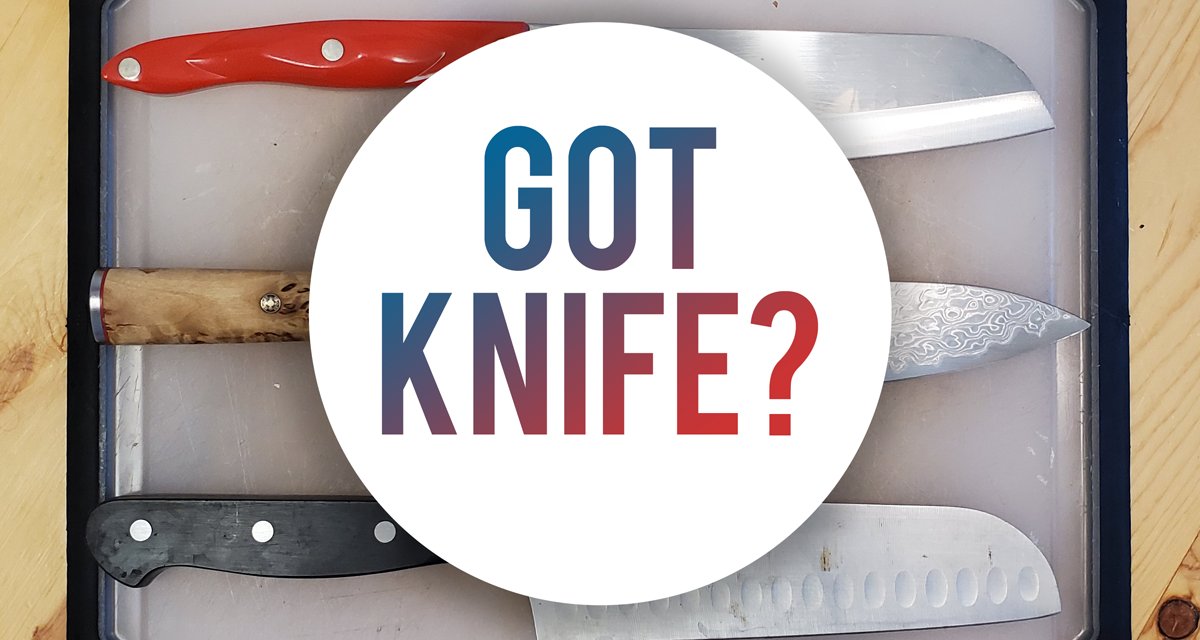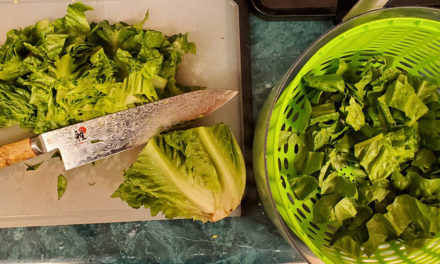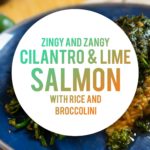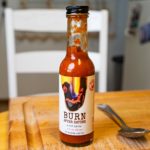There are only two kitchen knives you need. Period. I know that might be controversial and Jacques Pepin is screaming at me right now. But for nearly every single circumstance in a modern kitchen you need a Chef’s knife and a serrated knife. That’s it.
Some guides will tell you that a pairing knife is necessary too. To those people I say, update your views, this is the year 2020 and we have new tools and different ingredients than 10-20-30-50 years ago when the chef’s, serrated, pairing combination was created. This post will focus on the chef’s knife as that’s where we recommend spending most of your money. If you want a TLDR: Get a good chef’s knife, spend the rest of your budget on a serrated knife, skip the block sets of knives as they’re filled with bullshit.
Chef’s Knife
The chef’s knife is by far and away the most important knife to have in your kitchen. I have 3 of them and there are nights when all of them are in use. A chef’s knife is usually between 6 and 10 inches long and can be used for any number of kitchen tasks. Chopping, slicing, smashing, julienne, scoring, carving. Some chef’s knives have scalloped edges which help to keep moist and sticky food from sticking to the blade. For the most part I’ve experienced this has little effect.
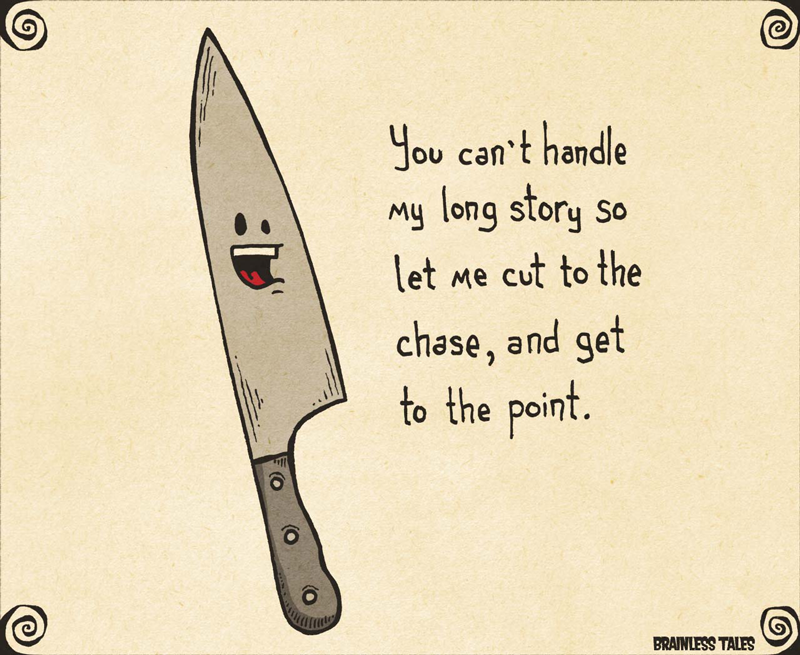
Image from Brainless Tales: http://www.brainlesstales.com/images/2014/Feb/knife-story.jpg
What Makes A Great Knife?
- It Has to be Sharp – As Alton Brown once said, “Happiness is a sharp knife”. This might seem obvious but when you dig a little deeper there’s more to this than meets the eye. I encourage you to go down the youtube hole of people making knives out of all sorts of things. The main thing to be concerned about isn’t if the knife is sharp, it’s how it holds that edge over time. For instance a cheap knife from the dollar store may cut an onion perfectly fine for a couple of weeks, and will work just as well as a nice knife. However, over time that dollar store knife will lose its edge and begin to flatten whereas the knife made out of better materials will hold its edge for longer. A good rule of thumb is that if you’re needing to sharpen (get your knives professionally sharpened, and we’re not talking about honing) your knife more than once a year as a home cook, you should be looking for a better knife.
- It should feel balanced – Unlike racing cars there isn’t a magic ratio of 50:50 weight distribution for knives. The right balance is the one that feels the best in your hand, and the only way to figure this out is to go to the store and hold some knives in your hands. For a chef’s knife in particular you want the knife to feel like it’s doing the work. I personally dislike knives with too much rocker on them, they hurt my wrists over time. I also prefer knives with a taper going into the handle as that feels more comfortable for longer chopping sessions.
- Western vs. Japanese – In general (knife geeks please don’t get too angry here), Western style knives will be made of softer material (usually stainless steel), which is easier to take care of with a honing steel. Western knives will tend to be a little taller, and have a little bit more of a rocker that works better for a rocking-chopping motion. Japanese chef’s knives have a whole bunch of unique properties depending on where they’re from. Some Japanese knives are biased towards using one hand vs. another, some are much thinner, some have divots, and many of them are designed for specific purposes. Japanese knives tend to be made of harder metals (or a unique combination of metals), which means they will hold and edge longer, but will chip easier and don’t work as easily with a honing steel.
In summary, if you’re looking for a generally great chef’s knife to use every day (because you will, even if it’s for cutting that bodega sammy in half) this is what you should be looking for:
Western Style
More versatile and easier for the home chef to care for. Bonus that good Western style knives can be had for a very reasonable price.
The Right Weight
Go for something that feels maneuverable in your hand, but still has weight so you’re aware that you’re waving a sharp thing around.
Go For Quality
Spend as much as you’re comfortable with, but know there is a distinct difference between $20, $50, and $120 knives.
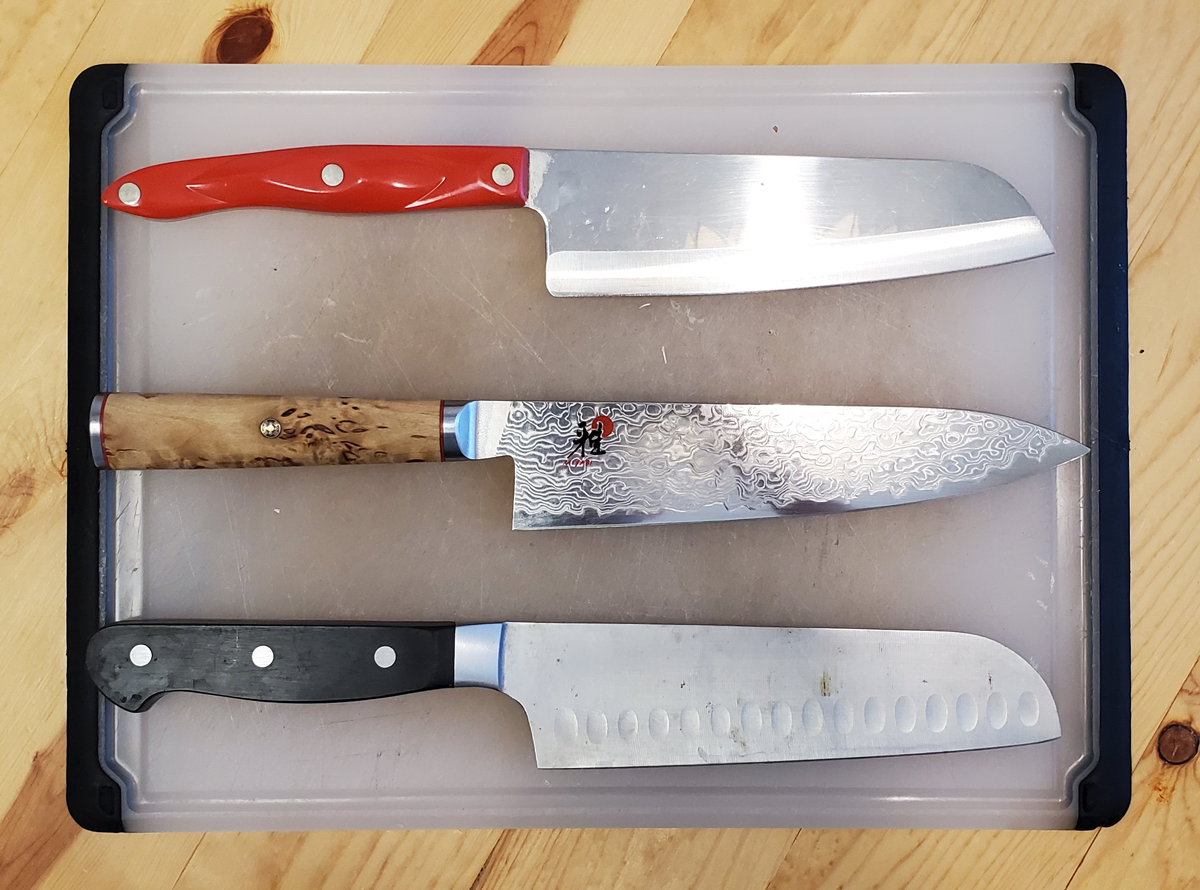
Of the three chef’s knives I own, one of them gets exponentially more use than the others. I LOVE my japanese knife. I had a great experience buying it, and highly recommend going to Knife Merchant in San Diego if you’re in the area. It feels amazing, cuts everything with ease, doesn’t tarnish as some japanese steel likes to do. But frankly, it’s a little too fancy for me. I’m a home cook that’s throwing things into the sink, or leaving dishes until the next day and this knife is just too much of a piece of art for me to put it through the weeknight treatment.
Check out this Miyabi Knife here
The black handle knife came as part of a kit and is a complete piece of junk. That being said, it cuts things and I use it often for things like squash or cleaving if my cleaver is dirty. This is a great example of “it’s not the tool, it’s how you use it”. I’ve made great food, and great cuts with this knife, and if it was the only sharp utensil available that would be fine. Our ancestors were cutting things with sharp stones… this piece of metal is more than up to the task.
The knife I use the most is technically a Santoku knife but I use it as my chef’s knife. For me, 7” is the perfect length especially in the kitchen’s that have been in my apartment. An 8-10” blade feels unwieldy and clunky on smaller countertops. This knife has just enough rocker to not fatigue my wrist for long cutting sessions and is tall enough that my knuckles clear the board, and I can use it to scoop veggies from the cutting board into my pan. The only thing I don’t like about this knife is the non-tapered handle, after a long night cutting veggies I start to get a little soreness in my hand… but no pain no gain! Do I think you should go buy this knife? No! I think you should go pick up a couple of knives and see what feels best!
Serrated Knives
Why a serrated knife? There are SO many other types of knives that you could put into your arsenal. Pairing knives, cleavers, boning knives are all super valuable tools. But all of these miss out on one key point… they can’t properly cut a loaf of bread. Even the sharpest best quality chef’s knife isn’t able to really get through a proper crust or slice a loaf without mushing it down. A good serrated knife goes through bread, like butter (hehe).
I own 4 serrated knives and none of them are amazing. Two of them as you see in the photo are short and are fine for getting through a tomato when making sandwiches or slicing up a thing baguette if my bread knife is lost. I have these two short serrated knives because my mom had one and used it all the time, and there’s a sense of nostalgia when I use them.
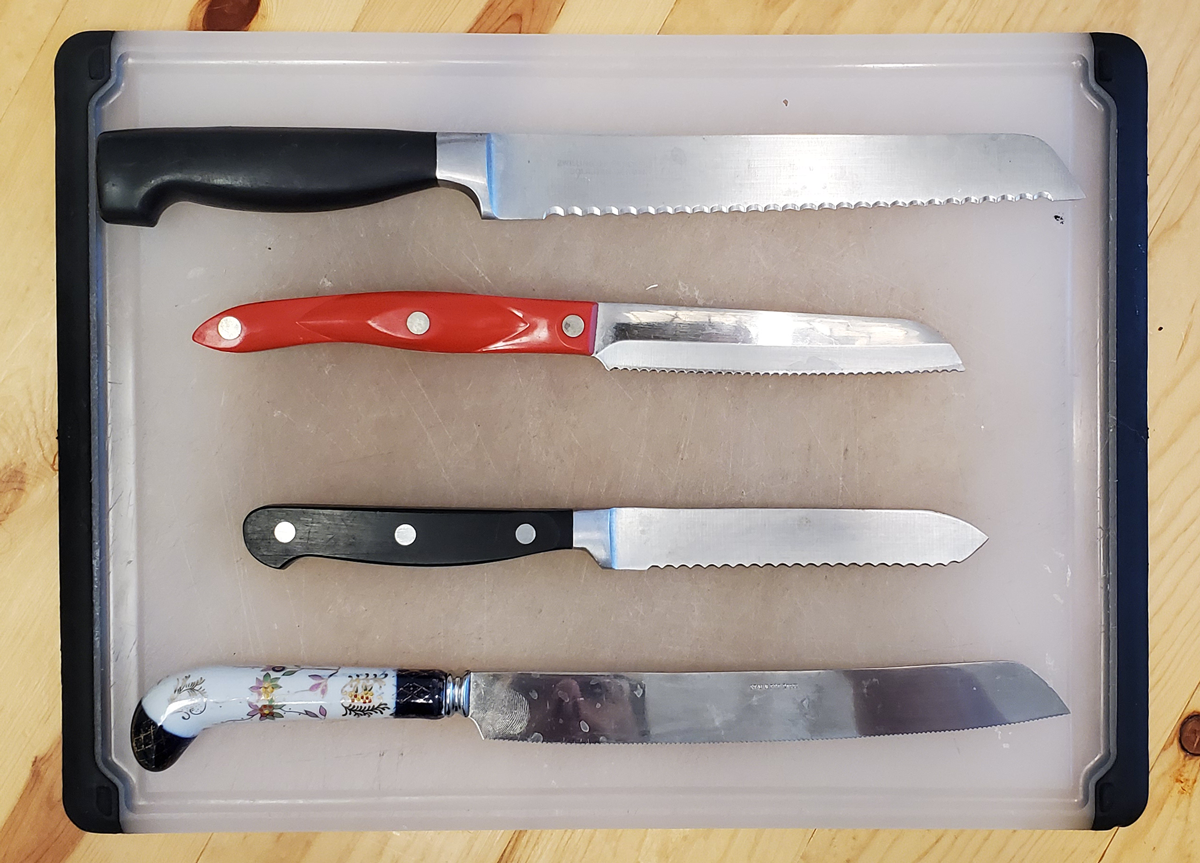
The two larger bread knives are fine (and that’s all they need to be). Well, let me rephrase. One of the larger bread knives is decorative and only used 3 times a year for cutting challah on holidays. The other knife is the bread knife I use all the time and it is perfectly fine. The key here is to not spend too much money as sharpening serrated knives is a big ole pain in the booty and you’ll end up getting a replacement every couple of years anyway.
Length
Should be 9-10 inches long. Anything less than this will struggle with large loaves and anything longer might start to be a little too flexible.
Grip
You should be able to get your whole hand comfortably around the handle. There are instances where you might choke-up on the handle, but for the most part grip it and rip it applies here and you want the knife to be comfortable.
Serration Style
This is the big debate when it comes to serrated knives, but there really is no debate. Sharp “teeth” style serrations give better results than wavy serrations. Boom, easy, no more arguing.
As per usual America’s Test Kitchen did an amazing overview of their top rated serrated knives, what to look for, and how they tested the playing field.
Do you have a favorite knife? A favorite brand? Are you so pissed at my explanation of Western vs. Japanese knives that you need to comment about it?! Let us know below!

